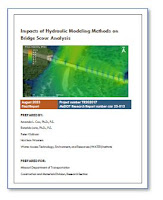The primary objective of this research is to provide MoDOT with rational procedures and guidelines to incorporate pile setup in MoDOT pile design. Pile setup refers to the time-dependent increase in the capacity of driven piles that occurs after the end of pile driving. High-strain dynamic load test data from end of driving (EOD) and beginning of restrike (BOR) were compiled from sites in Northern Missouri and Southeast Missouri to develop models of pile setup in these regions where the use of friction piles is common. Reliability analysis was performed using the model developed from Northern Missouri data to probabilistically calibrate resistance factors that can be applied to the expected pile setup without the need for restrikes. The application of these resistance factors is shown to produce significant cost benefits over the current common practice of ignoring pile setup. In addition, pile setup factors within the first 24 hrs. of the EOD were examined to provide information on the likelihood of successful restrikes for various levels of required capacity. Data from sites in Southeast Missouri were insufficient to develop a meaningful model of pile setup and associated resistance factors. The limited data that were used showed moderate levels of pile setup, indicating the use of restrike analysis in Southeast Missouri may be cost effective. Additional data collection at sites in Southeast Missouri is recommended.
Report number: cmr 23-014
Published: August 2023
Published: August 2023
Project number: TR202207
Authors: Brent L. Rosenblad and Andrew Z. Boeckmann
Authors: Brent L. Rosenblad and Andrew Z. Boeckmann
Performing organization: University of Missouri-Columbia

